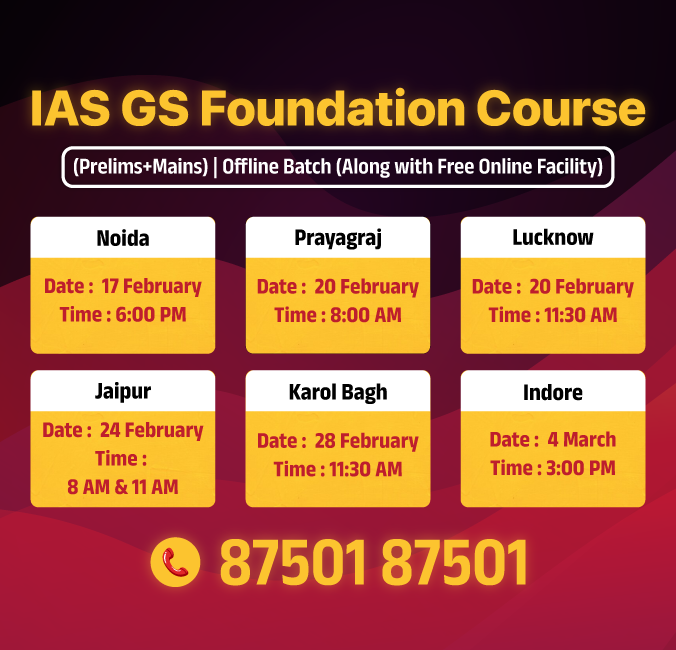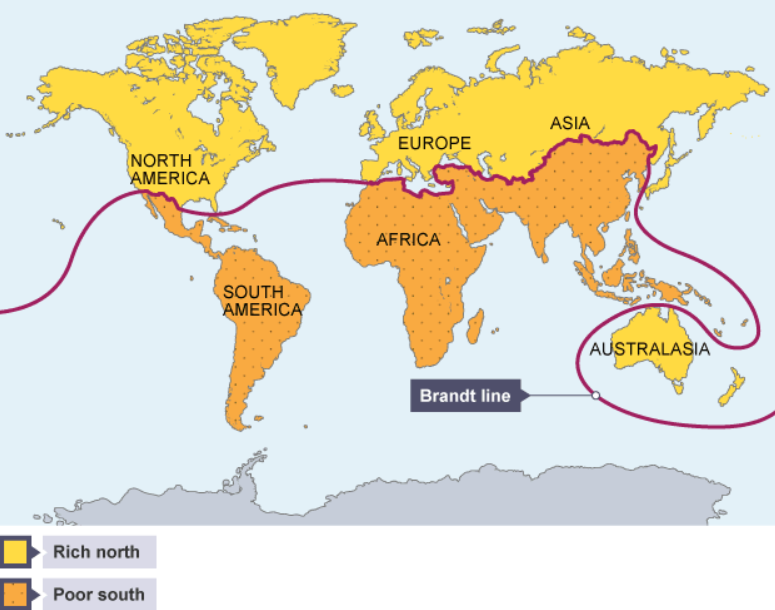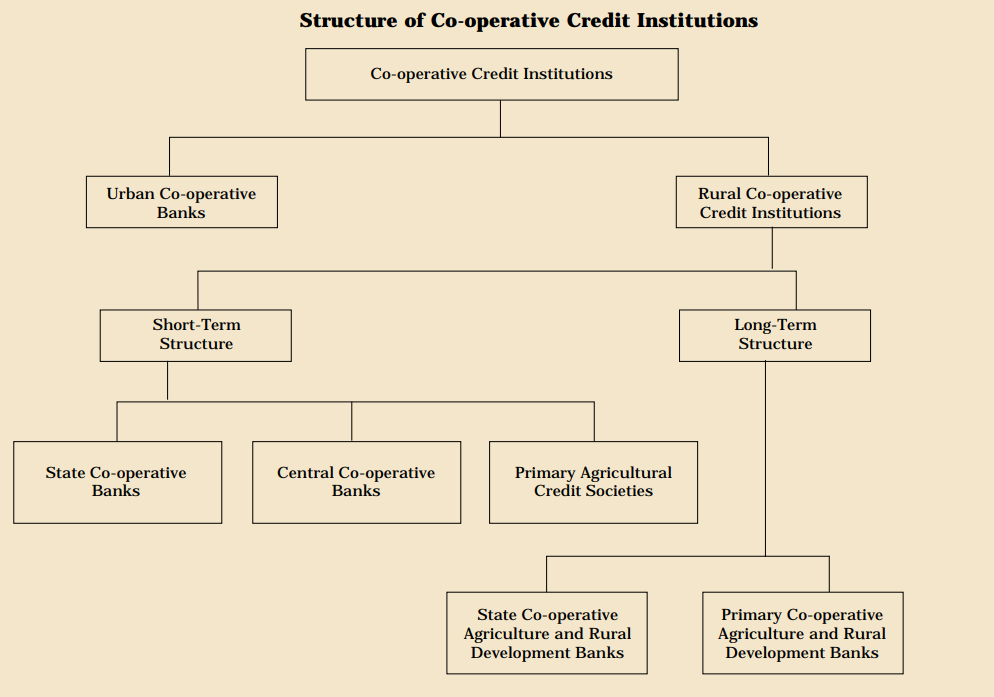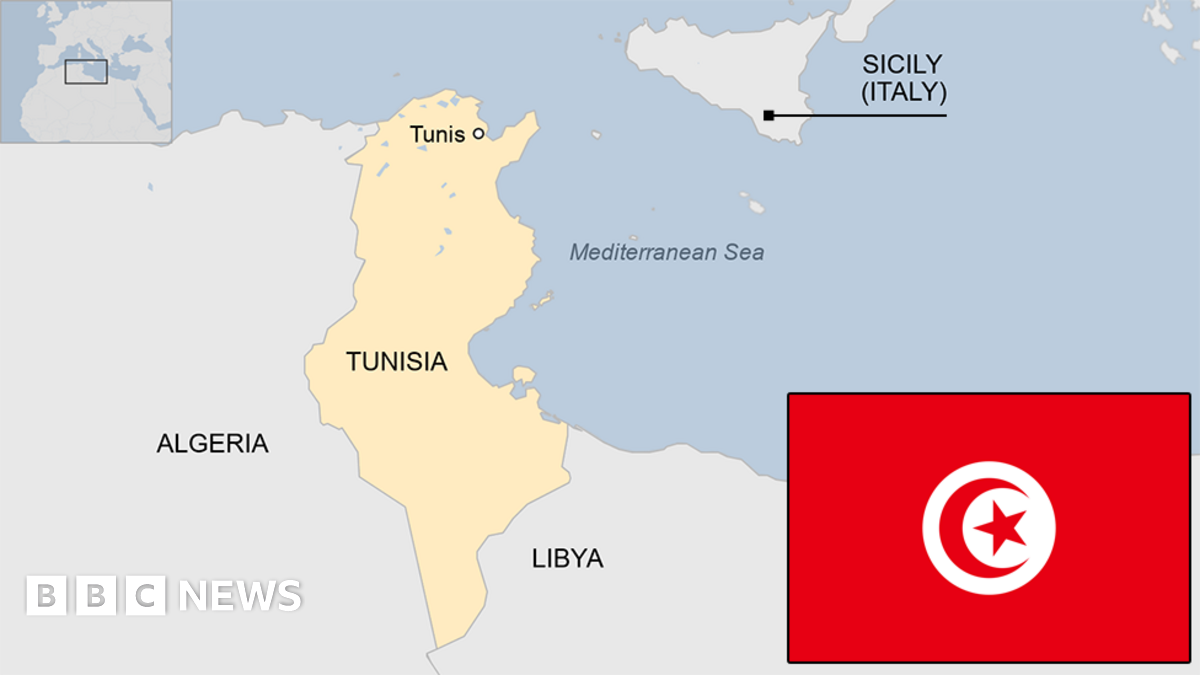International Relations
India as a Bridge Between the Global North and South
For Prelims: Global South, Non-Alignment Movement, Group of 77, African Union, Belt and Road Initiative, International Solar Alliance, Mission LiFE
For Mains: India’s Foreign Policy and its role in global governance, South-South cooperation in international relations.
Why in News?
Prime Minister Narendra Modi highlighted India’s commitment to amplifying the Global South's voice and leading inclusive global governance reforms, aiming to serve as a bridge between the Global North and South.
How India is Emerging as a Bridge Between North and South?
- Bridging the Global North-South Divide: Many developing nations face economic distress due to debt crises and restrictive International Monetary Fund (IMF) conditions.
- India offers a collaborative development model, unlike Western or Chinese approaches, with its proposed "Global Development Compact" providing an alternative, non-conditional development cooperation framework.
- Unlike Cold War-era diplomacy, India is deepening ties with the West (US, Europe) while expanding engagement with Africa, Latin America, and Southeast Asia.
- India advocates for a fairer global economic system, aligning with the Global South’s interests.
- India advocates for UN Security Council (UNSC) reform, arguing that developing countries deserve greater representation in global decision-making.
- India supports IMF and World Bank reforms to make financing more accessible for Global South nations.
- India offers a collaborative development model, unlike Western or Chinese approaches, with its proposed "Global Development Compact" providing an alternative, non-conditional development cooperation framework.
- India’s Early Role in the Global South: India played a key role in establishing the Non-Alignment Movement (NAM) to promote self-determination for developing nations.
- It helped form the Group of 77 (G-77) in 1964 to unite developing nations at the United Nations.
- At the Stockholm Conference, 1972, India championed climate justice, leading to the principle of Common But Differentiated Responsibilities (CBDR).
- Assertive Foreign Policy: Unlike the NAM, India is no longer a passive observer but an active participant in reshaping global governance.
- The inclusion of the African Union in G20 (2023) under India’s presidency showcased its diplomatic leverage.
- India’s Voice of Global South Summit has provided a platform for developing nations to collectively push for reforms.
- India champions the protection of traditional knowledge through initiatives like the World Intellectual Property Organization (WIPO) treaty and advocates for the inclusion of Global South voices in forums like the G20.
- India’s Vaccine Maitri initiative, providing millions of vaccine doses during the pandemic, demonstrates its commitment to the welfare of developing nations.
- India played a key role in establishing the Loss and Damage Fund, ensuring climate financing for vulnerable nations.
- Co-founded the International Solar Alliance (ISA) to promote clean energy in developing nations.
- Strategic Autonomy: India stays independent on global issues, such as the Russia-Ukraine war, strengthens South-South ties.
- India is not strictly anti-West but is engaging with both developed and developing nations without aligning with any bloc.
- Countering China: China’s Belt and Road Initiative (BRI) has left many Global South nations in debt distress.
- India is positioning itself as an alternative development partner, focusing on transparent, sustainable cooperation rather than debt-driven infrastructure projects.
- India with the Quad (India, US, Japan, Australia) is countering China’s maritime expansion in the Indo-Pacific.
What is Global North and South?
Click here to Read: Global South, Global North
What are the Challenges in India’s Global South Leadership?
- Managing China’s Influence: China’s financial muscle and large-scale investments in Global South nations pose competition.
- India’s own economic and infrastructure challenges could limit its ability to offer large-scale aid as compared to China.
- Delays in Project Implementation India’s infrastructure and development projects often suffer from delays and inefficiencies.
- Kaladan Multimodal Transit Project (Myanmar) remains incomplete after two decades.
- Asia-Africa Growth Corridor (AAGC), a Japan-India initiative, has made slow progress compared to China’s BRI.
- Institutional and Policy Gaps: India lacks a well-defined institutional framework for global development aid.
- Requires a structured long-term vision similar to China’s BRI.
- Additionally, India’s bid for permanent United Nations Security Council (UNSC) membership is opposed by rival Global South nations (e.g., Pakistan).
- Lack of Consistent Engagement: India’s limited engagement with traditional Global South platforms like NAM and G-77, and the absence of an India-Africa Summit since 2015, has created diplomatic gaps and hindered its influence in the developing world.
- Balancing Ties with the Global North: India’s deepening ties with the US and Europe must not alienate Global South allies. Balancing US, EU, and developing country expectations remains a diplomatic challenge.
- Big Brother Attitude: Some Global South nations view India as over-assertive in regional politics, leading to mistrust as evident by the “India Out” campaign in the Maldives accused India of meddling in domestic affairs.
How Can India Become an Effective Global Development Partner?
- Institutionalizing Development Diplomacy: India should set a clear international development assistance policy, similar to China’s BRI and Japan’s Official Development Assistance (ODA).
- Establishing an India International Development Agency can coordinate foreign aid, while the AAGC with Japan offers a viable alternative to the BRI.
- An India-led Global South Development Fund can finance sustainable infrastructure projects.
- North-South Cooperation: India should make trilateral partnerships involving both the Global South and Global North (e.g., India-US-Africa, India- Russia- ASEAN) to enhance its impact.
- Deepening South-South Cooperation: Strengthen regional pacts like IBSA (India-Brazil-South Africa) and BRICS, prioritize trade with Africa, Latin America, and ASEAN, and offer low-cost credit lines to Global South nations for infrastructure.
- Promote the Internationalisation of Indian Currency, RuPay, Unified Payments Interface (UPI), and digital payments to boost financial connectivity in the developing world.
- Human-Centric Development: India's Mission LiFE (Lifestyle for Environment) should expand to include human capital development in Global South nations through initiatives like Skill India, women entrepreneurship, and ITEC (Indian Technical and Economic Cooperation), along with investments in sustainable development goals (SDGs).
- Enhancing Soft Power: Expand diaspora engagement in Africa, Latin America, and South Asia while strengthening education and research ties through scholarships and technical training programs.
Conclusion
India’s leadership in the Global South is a strategic move to reshape global governance by promoting inclusive development. By addressing internal challenges and fostering strong, transparent partnerships, India can emerge as a key driver for sustainable growth and global equity.
|
Drishti Mains Question: India aspires to be the ‘Voice’ of the Global South, but it must also ‘listen’ to be a good leader." Critically analyze India’s role in reshaping global governance. |
UPSC Civil Services Examination, Previous Year Question (PYQ)
Mains
Q.“If the last few decades were of Asia’s growth story, the next few are expected to be of Africa’s.” In the light of this statement, examine India’s influence in Africa in recent years. (2021)
Q.Evaluate the economic and strategic dimensions of India’s Look East Policy in the context of the post Cold War international scenario. (2016)


Governance
Status of Devolution to Panchayats in States 2024 Report
For Prelims: Panchayati Raj Institutions (PRIs), Article 243G, 11th Schedule, Rashtriya Gram Swaraj Abhiyan, State Finance Commissions (SFCs), GST, Gram Sabha, MGNREGA, NHM, PMAY, Finance Commissions.
For Mains: Progress and challenges in functioning of Panchayati Raj Institutions (PRIs).
Why in News?
The Ministry of Panchayati Raj has released a report titled “Status of Devolution to Panchayats in States – An Indicative Evidence Based Ranking” highlighting the progress in empowering Panchayati Raj Institutions (PRIs) across India.
What are the Key Findings of the Devolution to Panchayats in States 2024 Report?
- About Report: It is also referred to as the Panchayat Devolution Index 2024 which evaluates the autonomy and empowerment of Panchayati Raj Institutions (PRIs) by assessing the devolution of powers and resources across Indian states and Union Territories.
- It assesses Panchayats' autonomy in decision-making and implementation, reflecting Article 243G of the Constitution.
- Dimensions: It assesses six critical dimensions i.e., Framework, Functions, Finances, Functionaries, Capacity Building, and Accountability of the Panchayats.
- Key Findings:
- Overall Devolution: The overall devolution to rural local bodies increased from 39.9% in 2013-14 to 43.9% in 2021-22.
- State Rankings: Top 5 States are Karnataka (1st), Kerala (2nd), Tamil Nadu (3rd), Maharashtra (4th) and Uttar Pradesh (5th) .
- Lowest-ranked states/UTs are Dadra & Nagar Haveli and Daman & Diu (13.62), Puducherry (16.16), and Ladakh (16.18).
- Improvements in Infrastructure: Government efforts have strengthened PRIs through infrastructure, staffing, and digitalization, raising the functionaries index from 39.6% to 50.9%.
- The Rashtriya Gram Swaraj Abhiyan (RGSA, 2018) boosted the capacity enhancement component of the Index from 44% to 54.6%.
- Performance Across 6 Dimensions:
|
Dimension |
State |
Key Strength |
|
Framework |
Kerala |
Robust legal and institutional framework for Panchayats |
|
Functions |
Tamil Nadu |
Devolved functional responsibilities to Panchayats |
|
Finances |
Karnataka |
Best financial management practices |
|
Functionaries |
Gujarat |
Personnel management and capacity-building efforts |
|
Capacity Enhancement |
Telangana |
Institutional strengthening efforts |
|
Accountability |
Karnataka |
Transparency and financial accountability |
- Challenges:
- Institutional Flaws: Rotation of reserved seats for SCs, STs, and women affects leadership continuity as new leaders may not prioritize the same goals or may have different approaches.
- District Planning Committee (DPCs) exist but lack proper implementation.
- Inconsistent Transfer of Functions: 29 subjects (11th Schedule) are inconsistently transferred as State governments fear losing control or influence at ground level, limiting Panchayats' decision-making power.
- Weak Financial Autonomy: Non-implementation of State Finance Commissions (SFCs) recommendations, centralized GST, and lack of fiscal autonomy restrict Panchayats' financial control.
- Poor Resource Capacity: Elected representatives lack proper training in governance, budgeting, and planning.
- Low Accountability: Low social audits and Gram Sabha participation reduce oversight; insufficient finance disclosure undermines transparency.
- Institutional Flaws: Rotation of reserved seats for SCs, STs, and women affects leadership continuity as new leaders may not prioritize the same goals or may have different approaches.
- Recommendations:
- Fund Utilization: Stresses strict monitoring of funds to prevent misuse and corruption.
- Strengthening Panchayat Bhawans: Should act as hubs for public services and improve access to government schemes e.g., Ayushman Bharat.
- Empower Panchayats: Urges states to fully devolve powers and responsibilities to Panchayats.
- Strengthening SFCs: To ensure timely fund allocation.
- Autonomy in decision-making for Panchayats, especially in flagship schemes like MGNREGA, NHM, and PMAY.
- Digital Infrastructure: Enhance digital infrastructure in Panchayats for better governance and transparency.
What is the Status of PRI Funding?
- Revenue Composition: PRIs generate only 1% of revenue through taxes, indicating limited self-financing capacity.
- 80% of PRI revenue comes from Central government grants, and 15% from State government grants.
- Revenue Per Panchayat: Each Panchayat earns Rs 21,000 from own taxes and Rs 73,000 from non-tax sources.
- Central grants average Rs 17 lakh, and State grants are around Rs 3.25 lakh per Panchayat, showing high reliance on external support.
- Low Revenue Expenditure: The ratio of revenue expenditure of panchayats to nominal GSDP is less than 0.6% for all the states ranging from 0.001% in Bihar to 0.56% in Odisha.
- Inter-State Disparities: Kerala and West Bengal have the highest average revenue (over Rs 60 lakh and Rs 57 lakh), while states like Andhra Pradesh and Punjab report much lower revenues (less than Rs 6 lakh).
How Can PRI Funding be Improved?
- Regular Transfer of Funds: The 14th and 15th Finance Commissions recommended substantial grants to Panchayats, but regular transfers, rather than ad-hoc grants, are needed for sustainability.
- Financial transparency and accountability should be ensured through regular audits, RTI disclosures, and strong procurement procedures to ensure efficient fund use.
- Capacity Equalization: Fiscal transfers to PRIs should match states' capacity to finance Panchayats, ensuring balanced and sustained local governance growth.
- Strengthening SFCs: SFC reports should be submitted regularly, with full implementation of recommendations to ensure consistent Panchayat funding.
- Enhancing Own Revenue Generation: Panchayats should boost revenue through local taxes (e.g., land taxes), with states providing support and incentives for better tax collection and administration.
- Creating Special Purpose Grants: Special-purpose grants should be made to incentivize performance and improve rural infrastructure and services like roads, water, and sanitation.
Click Here to Read: What is a Panchayati Raj Institution?
Conclusion
The "Devolution to Panchayats" report highlights notable progress in empowering local bodies, with increased devolution and strengthened infrastructure. However, challenges such as weak financial autonomy, inconsistent devolution, and poor accountability persist. Addressing these gaps can further empower PRIs for sustainable local governance and development.
|
Drishti Mains Question: Discuss the progress and challenges in the devolution of powers to Panchayats in India. |
UPSC Civil Services Examination, Previous Year Questions (PYQs)
Prelims
Q. Local self-government can be best explained as an exercise in (2017)
(a) Federalism
(b) Democratic decentralisation
(c) Administrative delegation
(d) Direct democracy
Ans: (b)
Q. The fundamental object of the Panchayati Raj system is to ensure which among the following? (2015)
- People’s participation in development
- Political accountability
- Democratic decentralization
- Financial mobilization
Select the correct answer using the code given below
(a) 1, 2 and 3 only
(b) 2 and 4 only
(c) 1 and 3 only
(d) 1, 2, 3 and 4
Ans: (c)
Mains
Q1. To what extent, in your opinion, has the decentralisation of power in India changed the governance landscape at the grassroots? (2022)
Q2. Assess the importance of the Panchayat system in India as a part of local government. Apart from government grants, what sources can the Panchayats look out for financing developmental projects? (2018)


Science & Technology
ISRO's Space Tech Transfer for Daily Applications
For Prelims: IN-SPACe, Indian Space Research Organisation, Chandrayaan-3, LiDAR
For Mains: Space Technology and its Applications in Daily Life, Technological Transfer on Economic Growth
Why in News?
The Indian National Space Promotion and Authorization Centre (IN-SPACe), has identified 166 technologies developed by the Indian Space Research Organisation (ISRO) for space missions that can be transferred to industries for non-space applications.
- The move is expected to benefit various sectors, including automotive, construction, and logistics, thereby enhancing daily lives.
How Will ISRO's Space Tech Impact Various Industries?
- Automotive Industry:
- Collision Avoidance Systems: The software and algorithms developed for Chandrayaan-3's landing can be adapted to prevent car collisions, improving vehicle safety.
- Airbag Deployment: Pressure sensors used in launch vehicles to monitor propellants can be repurposed to determine optimal airbag deployment times, enhancing passenger safety.
- 3D LiDAR Camera: Originally developed for space navigation, 3D LiDAR Camera generates 3D images with depth information and can assist in hazard detection, pedestrian safety, and autonomous driving.
- Sensors: Niche sensors developed by ISRO can reduce costs in automotive and industrial applications by localizing production and reducing dependency on imports.
- Healthcare: The 3D LiDAR Camera can be used for accurate body measurements to predict lifestyle diseases or for advanced imaging solutions in medical diagnostics.
- Construction and Infrastructure: ISRO's NRCM-204, a highly corrosion-resistant coating, protects metals from harsh environments, including acidic corrosion.
- This can be used in construction to protect metal structures and in the automotive industry to prevent vehicle corrosion.
- Vibration Management Systems originally designed to protect satellite electronics from vibrations during launch, this technology can be adapted for seismic isolation in buildings, making them safer during earthquakes.
- Electronics Devices: ISRO’s Benzoxazine polymer is suitable for encapsulating electronic components and printed circuit boards.
- It offers stability across various temperatures and excellent flame-retardant properties.
- Logistics and Retail: The LiDAR camera can be used to measure parcels accurately, optimizing packaging and reducing shipping costs.
- It can also be utilized for people counting in crowded places like markets and events, aiding in crowd management and safety.
- Energy and Transportation: ISRO's cost-effective Lithium-Ion Battery Technology can accelerate the adoption of electric vehicles, supporting cleaner and more sustainable transportation systems.
What are the Benefits of Space Tech Transfers?
- Boosting India’s Manufacturing: Domestic production of sensors, batteries, and LiDAR-based systems can reduce dependence on imported automotive and electronic components, supporting India’s self-reliance (Atmanirbhar Bharat) while lowering costs and boosting local industries.
- Industrial Competitiveness: Indian startups and MSMEs in aerospace, healthcare, and construction can leverage these technologies to develop innovative products, fostering entrepreneurship.
- Public Safety and Urban Management: With the growing incidents of stampedes at major public events in India, crowd monitoring solutions using LiDAR can assist in law enforcement, disaster management, and efficient urban planning.
Indian National Space Promotion and Authorization Centre (IN-SPACe)
- IN-SPACe is a single-window, independent, nodal agency that functions as an autonomous agency in the Department of Space (DOS).
- It was formed following the space sector reforms in 2020 to enable and facilitate the participation of private players.
- IN-SPACe promotes, authorizes, and supervises space activities of non-governmental entities, including building launch vehicles, providing space services, sharing ISRO’s infrastructure, and establishing new space facilities.
- IN-SPACe bridges ISRO and private entities, assessing space resource utilization and addressing the needs of private players, including research institutions.
Read more: Impact of Space Missions on Indian Economy
|
Drishti Mains Question: ISRO’s space technology transfers to the private sector have the potential to revolutionize multiple industries. Discuss the implications of such transfers. |
UPSC Civil Services Examination, Previous Year Question (PYQ)
Mains
Q. Discuss India’s achievements in the field of Space Science and Technology. How the application of this technology helped India in its socio-economic development? (2016)


International Relations
India’s Overseas Port Investment
For Prelims: South China Sea, Indo-Pacific Oceans Initiative, SAGAR (Security and Growth for All in the Region), India’s Act East Policy, International North–South Transport Corridor, Maritime India Vision 2030, Sagar Mala Program, String of Pearls, India-Middle East-Europe Economic Corridor
For Mains: India’s Overseas Port Investment, Initiatives to Enhance India Presence in International Maritime Infrastructure, Challenges to India’s Overseas Maritime Presence
Why in News?
The US released a Memorandum enforces "maximum pressure" on Iran, specifically mentioning Chabahar Port.
- This raises concerns over India’s overseas port investments and trade, potentially impacting its geostrategic and economic interests in the region.
What are India's Major Overseas Port Investments?
- Haifa Port (Israel): It enhances India-Israel trade, security ties, and Mediterranean connectivity.
- Mongla & Chittagong Ports (Bangladesh): Improves India-Bangladesh trade, transshipment, and Northeast connectivity, reducing transport costs.
- Duqm Port (Oman): Strengthens India's Gulf presence, naval operations, and energy security.
- Sittwe Port (Myanmar): Part of the Kaladan project, boosting connectivity to Northeast India and ASEAN while reducing dependence on the Siliguri Corridor.
- Sabang Port (Indonesia): India and Indonesia are collaborating on Sabang Port near the Malacca Strait..
- Trincomalee & Kankesanthurai Ports (Sri Lanka): Enhancing trade and passenger connectivity, strengthening India-Sri Lanka maritime ties.
What is the Significance of India's Overseas Port Investment?
- Geopolitical and Strategic Importance: India’s overseas port investments counter China’s BRI dominance (e.g., Gwadar, Hambantota) by securing key maritime routes.
- Ports like Chabahar (Iran) and Colombo (Sri Lanka) enhance regional connectivity, bypass hostile routes, and strengthen trade with Central Asia.
- Strategic locations like Duqm (Oman) provide military and logistical advantages, bolstering India’s maritime security and influence in the Indian Ocean.
- Economic and Trade Benefits: India’s overseas port investments enhance trade routes (e.g., Chabahar, Haifa), reducing transit costs and improving supply chain efficiency.
- They facilitate access to landlocked markets in Central Asia and Africa, expanding trade opportunities.
- Additionally, these investments strengthen bilateral ties, fostering long-term economic and diplomatic partnerships.
- Securing Energy: It also ensures energy security by controlling key transit points in the Indian Ocean Region (IOR), safeguarding vital oil and gas imports.
- They also mitigate supply chain disruptions by providing alternative routes (e.g., Chabahar), reducing vulnerabilities from regional conflicts or blockades.
What Other Initiatives India is Taking to Expand its Global Maritime Presence?
- Strengthening Regional Connectivity:
- INSTC
- Africa-Asia Growth Corridor (AAGC): AAGC is an India-Japan initiative enhancing Asia-Africa connectivity through infrastructure, trade, and capacity building.
- Investments in Shipping Infrastructure:
- Naval Diplomacy and Security Initiatives:
- Deep-Sea Exploration and Underwater Infrastructure:
What are the Challenges in Overseas Port Investments?
- Geopolitical Risks: China’s investments in Gwadar and Hambantota have driven India to expand maritime projects, but political shifts in host nations, like Sri Lanka, impact investment stability.
- Additionally, terrorism and conflicts, such as Taliban attacks on Indian workers in Chabahar and Myanmar’s instability affecting Sittwe Port, pose security challenges.
- Sanctions & Regulatory Hurdles: US sanctions on Iran restrict Chabahar Port’s operations, impacting India’s regional connectivity.
- Additionally, Western scrutiny of India’s partnerships in sensitive regions creates geopolitical pressures on investment decisions.
- Internal Policy Debates: There is an ongoing discussion on whether state-owned India Ports Global Ltd (IPGL) or private entities should spearhead overseas port investments.
- Additionally, concerns over transparency and accountability in awarding contracts and managing projects persist.
Way Forward
- Diplomatic & Strategic Partnerships: India should deepen diplomatic engagements to secure new port investments in East Africa, Indonesia, and South Asia while strengthening ties with Western allies to facilitate joint ventures and counterbalance China’s influence.
- India should seek Chabahar sanctions waivers by emphasizing its role in Afghan reconstruction while diversifying trade via INSTC to reduce dependency on it.
- Enhancing Regional Influence: India should position itself as a credible alternative to Chinese debt-trap diplomacy in South Asia. Leveraging US backed investments in Sri Lanka can strengthen its maritime presence.
- Balanced Investment Approach: India should adopt a hybrid investment model with state-run entities and private players while leveraging public-private partnerships (PPPs), sovereign funds, and multilateral support (ADB) for sustainable maritime infrastructure development.
|
Drishti Mains Question: Critically analyze the impact of India’s overseas port investments on its regional and global influence. |
UPSC Civil Services Examination, Previous Year Question (PYQ)
Q. What is the importance of developing Chabahar Port by India? (2017)
(a) India’s trade with African countries will enormously increase.
(b) India’s relations with oil-producing Arab countries will be strengthened.
(c) India will not depend on Pakistan for access to Afghanistan and Central Asia.
(d) Pakistan will facilitate and protect the installation of a gas pipeline between Iraq and India.
Ans: (c)
Mains
Q. In what ways would the ongoing U.S-Iran Nuclear Pact Controversy affect the national interest of India? How should India respond to this situation? (2018)
Q. The question of India’s Energy Security constitutes the most important part of India’s economic progress. Analyse India’s energy policy cooperation with West Asian countries. (2017)


Important Facts For Prelims
Cooperative Bank
Why in News?
The Reserve Bank of India (RBI) intervened in New India Cooperative Bank over fund misappropriation concerns, appointing an administrator and imposing restrictions to protect depositors.
- This move reflects a broader trend of consolidation and financial discipline in the cooperative banking sector.
What are the Cooperative Banks?
- Definition: A Co-operative Bank is a Co-operative Society, either registered under State Cooperative Societies Acts or the Multi-State Cooperative Societies Act, 2002, engaged in banking business.
- Cooperative banks in India are classified into Urban Cooperative Banks (UCBs), and Rural Cooperative Banks (RCBs).
- Ownership: Cooperative banks are owned and operated by members, who are its customers.
- Members usually have equal voting rights, according to the cooperative principle of “one person, one vote”.
- Objective: Provide rural financing and micro-financing. Primarily support agriculture, small-scale industries, and self-employed workers
- Regulation and Supervision: Cooperative banks in India function under a dual regulatory framework, dividing banking and managerial oversight between the RBI and the Registrar of Cooperative Societies (RCS).
- RBI’s Role: Regulates banking functions under the Banking Regulation Act, 1949, and Banking Laws (Application to Cooperative Societies) Act, 1965. This includes capital adequacy, risk management, lending norms, and financial supervision.
- RCS’s Role: Oversees managerial aspects under the State/Central Government, including incorporation, registration, governance, audit, board supersession, and liquidation of cooperative banks.
- License Cancellation: RBI can revoke the license of a Co-operative Bank if it ceases banking operations or fails to meet the conditions set by RBI.
- Importance: UCBs cater to the financial needs of small businesses and individuals, fostering growth in urban and semi-urban areas.
- Cooperative banks play a vital role in providing credit to farmers, boosting rural economic development.
- Cooperative banks are more resilient to economic downturns, as they avoid high-risk assets, demonstrated by UCBs during the 2008 global financial crisis.
- They cater to the unbanked and underbanked sections, promoting inclusive growth by Financial Inclusion.
|
Aspect |
Commercial Banks |
Cooperative Banks |
|
Governing Act |
Commercial banks are constituted by a uniform act passed by the parliament |
Cooperative banks are constituted by different states under different acts. |
|
Regulation |
RBI directly |
Regulated by RBI, NABARD and Registrar of Co-operative Societies. |
|
Services Offered |
Larger scope in offering a variety of banking services |
Lesser scope in offering a variety of banking services. |
|
Area of Operation |
Large-scale operation, usually countrywide. Commercial banks can also open branches in foreign countries. |
Small-scale operation, usually limited to a region. Cooperative banks cannot open branches in foreign countries. |
|
Borrowers |
Borrowers are only account holders and have no voting power, so they cannot influence the lending policy |
Borrowers are member shareholders, so they have some influence on the lending policy of the bank |
UPSC Civil Services Examination, Previous Year Question (PYQ)
Q. With reference to ‘Urban Cooperative Banks’ in India, consider the following statements:
- They are supervised and regulated by local boards set up by the State Governments.
- They can issue equity shares and preference shares.
- They were brought under the purview of the Banking Regulation Act, 1949 through an Amendment in 1966.
Which of the statements given above is/are correct?
(a) 1 only
(b) 2 and 3 only
(c) 1 and 3 only
(d) 1, 2 and 3
Ans: (b)


Important Facts For Prelims
DNA Nano Rafts
Why in News?
A study published in Nature Materials has introduced a revolutionary technique using DNA Nanorafts to create Artificial Cells that can work like biological membranes.
- These programmable nanostructures can reshape membranes, form pathways, and react to surroundings, advancing medicine, biosensors, and artificial life research.
What is DNA Nanorafts?
- DNA Nanorafts: DNA (Deoxyribonucleic Acid) nano-rafts are tiny, flat structures made from DNA strands which can be programmed to control the shape and permeability of cell membranes in response to specific chemical signals.
- This ability allows them to influence cell-like membranes in a controlled way.
- Working Mechanism:
- Attachment to Model Membranes: DNA nanorafts attach to Giant Unilamellar Vesicles (GUVs), which serve as simplified models of biological cell membranes.
- GUVs are artificial, cell-sized lipid membranes that mimic real cell membranes, making them useful for studying membrane behavior and transport mechanisms in synthetic biology.
- Shape Modification & Reversibility: DNA nanorafts expand when "unlocking" DNA strands are added, altering the membrane’s shape.
- This unlocking can be triggered by enzymes, mechanical devices, or other methods. The process is reversed by adding "locking" DNA strands, restoring the original shape.
- Locked Nucleic Acid (LNA) helps secure DNA strands together for stability.
- Controlled Membrane Manipulation: This technique allows scientists to precisely control artificial cell membranes.
- Attachment to Model Membranes: DNA nanorafts attach to Giant Unilamellar Vesicles (GUVs), which serve as simplified models of biological cell membranes.
- Key Functions:
- Cell Shaping: Nanorafts can alter the structure of synthetic cell membranes, which is essential for cell movement, division, and communication.
- Gatekeeping (Molecular Transport): They create temporary channels in the membrane, allowing molecules to pass through.
- These channels can open and close as needed, similar to natural protein-based channels in living cells.
What is an Artificial Cell?
- About: Artificial cells are synthetic structures that mimic living cells but are made from non-living components like synthetic membranes and chemicals.
- Creation: Synthetic cells can be created using 2 main approaches:
- Top-down approach: Scientists start with a living cell, remove non-essential genes, and retain only core functions. Eg: Mycoplasma mycoides JCVI-syn3.0 (minimal synthetic cell).
- Bottom-up approach: Researchers build a cell-like structure from the ground up by combining biological and non-biological molecules to replicate key cellular functions. Eg: GUVs
- Applications:
- Drug Delivery: Synthetic cells can be designed to transport and release medicines at specific targets in the body.
- Biomedicine: They can aid in developing innovative therapies for chronic diseases such as cancer.
- Organ Transplantation: It could help in creating bioengineered tissues or organs, addressing the shortage of donor organs.
UPSC Civil Services Examination Previous Year Question
Q. Consider the following statements:
- Genetic changes can be introduced in the cells that produce eggs or sperms of a prospective parent.
- A person’s genome can be edited before birth at the early embryonic stage.
- Human induced pluripotent stem cells can be injected into the embryo of a pig.
Which of the statements given above is/are correct?
(a) 1 only
(b) 2 and 3 only
(c) 2 only
(d) 1, 2 and 3
Ans: (d)


Rapid Fire
Gangasagar Mela
Rising Sea Levels threatens Gangasagar Mela on Sagar Island in West Bengal, highlighting the intersection of climate change and pilgrimage.
- Gangasagar Mela: It is the world's second-largest human congregation, after the Kumbh Mela, held at the confluence of the holy river Ganga and the Bay of Bengal, celebrated on the eve of Makar Sankranti.
- Sagar Island: Also known as Ganga Sagar or Sagardwip, Sagar Island is located about 120 km from Kolkata and is the largest in the Sundarbans archipelago, with a population of around two lakh (2011 Census).
- Classified under the sand group category, it is accessed by crossing the Muriganga River.
- Impact of Climate Change: Rising sea levels and soil erosion threaten the Kapil Muni temple (once a central site of the mela), with the sea encroaching closer.
- Mangrove destruction for construction for mela worsens exposure to tidal surges, highlighting the need for natural barriers.
Read more: Right to Protection from Climate Change Impacts


Rapid Fire
38th National Games
The Union Home Minister addressed the closing ceremony of the 38th National Games in Haldwani, Uttarakhand, highlighting the development in India’s sports infrastructure.
- The 39th National Games will be held in Meghalaya.
- About 38th National Games: It was held from 28th January to 14th February 2025 in Uttarakhand.
- Mascot: The mascot of the games was Mouli, inspired by Uttarakhand's state bird, the Monal.
- Top Performers: Services Sports Control Board (1st), Maharashtra (2nd), and Haryana (3rd).
- The National Games of India is an Olympic-style multi-sport event where athletes from states and Union Territories compete for medals.
- India's sports budget grew from Rs 800 crore in 2014 to Rs 3,800 crore by 2025-26.
- India aims to host the Olympic Games in 2036, with athletes already preparing for success through the TOPS (Target Olympic Podium Scheme).
Read More: National Sports Day 2024 and RESET Programme


Rapid Fire
Konda Veduru Bamboo in the Godavari Valley
The Konda Veduru bamboo variety (Dendrocalamus strictus), often referred to as the ‘Green Gold’, plays a significant role in the cultural, nutritional, and economic practices of the Konda Reddi tribe.
- Konda Veduru Bamboo: Native to the Eastern Ghats, primarily found in the Godavari river valley (spreads across Andhra Pradesh, Telangana, Odisha and Chhattisgarh).
- Konda Veduru bamboo shoots is a staple food for the Konda Reddi tribe. Known for its nutritional benefits, rich in proteins, amino acids, vitamins, and iron, with women traditionally harvesting the Bamboo shoots.
- Konda Reddi Tribe: The Konda Reddis, a Particularly Vulnerable Tribal Group in Andhra Pradesh, follow Folk Hinduism (worship of local deities, household deities).
- The family structure is patriarchal and patrilocal, with socially accepted marriage practices such as love and exchange.
- Governed by a Kula Panchayat and led by hereditary headmen, their livelihood relies on shifting cultivation.
Read more: Konda Reddy Tribe


Rapid Fire
Anti-Migrant Sentiment in Tunisia
The growing anti-migrant sentiment in Tunisia has severely impacted sub-Saharan migrants.
- Anti-migrant rhetoric: Tunisia’s President Kais Saied labeled sub-Saharan migrants a "demographic threat" in 2023, triggering a surge in racially motivated attacks and discrimination.
- The UN Refugee Agency halted asylum applications due to government pressure, leaving migrants vulnerable.
- Tunisia:
- Location: Northernmost country in Africa, bordering the Mediterranean Sea, between Algeria and Libya.
- Capital : Tunis
- Ethnic groups: Arab 98%, European 1%, Jewish and other 1%.
- Economy: Lower middle-income, high unemployment, especially for youth and women.
- Terrorism: Islamic State of Iraq and ash-Sham (ISIS) network in Tunisia (known locally as Ajnad al-Khilafah or the Army of the Caliphate).
- International Relations: Member of UN, Organisation of Islamic Cooperation, African Union, Non-Aligned Movement and Group of 77.
Read more: Power Grab in Tunisia




.png)
.png)
.png)






